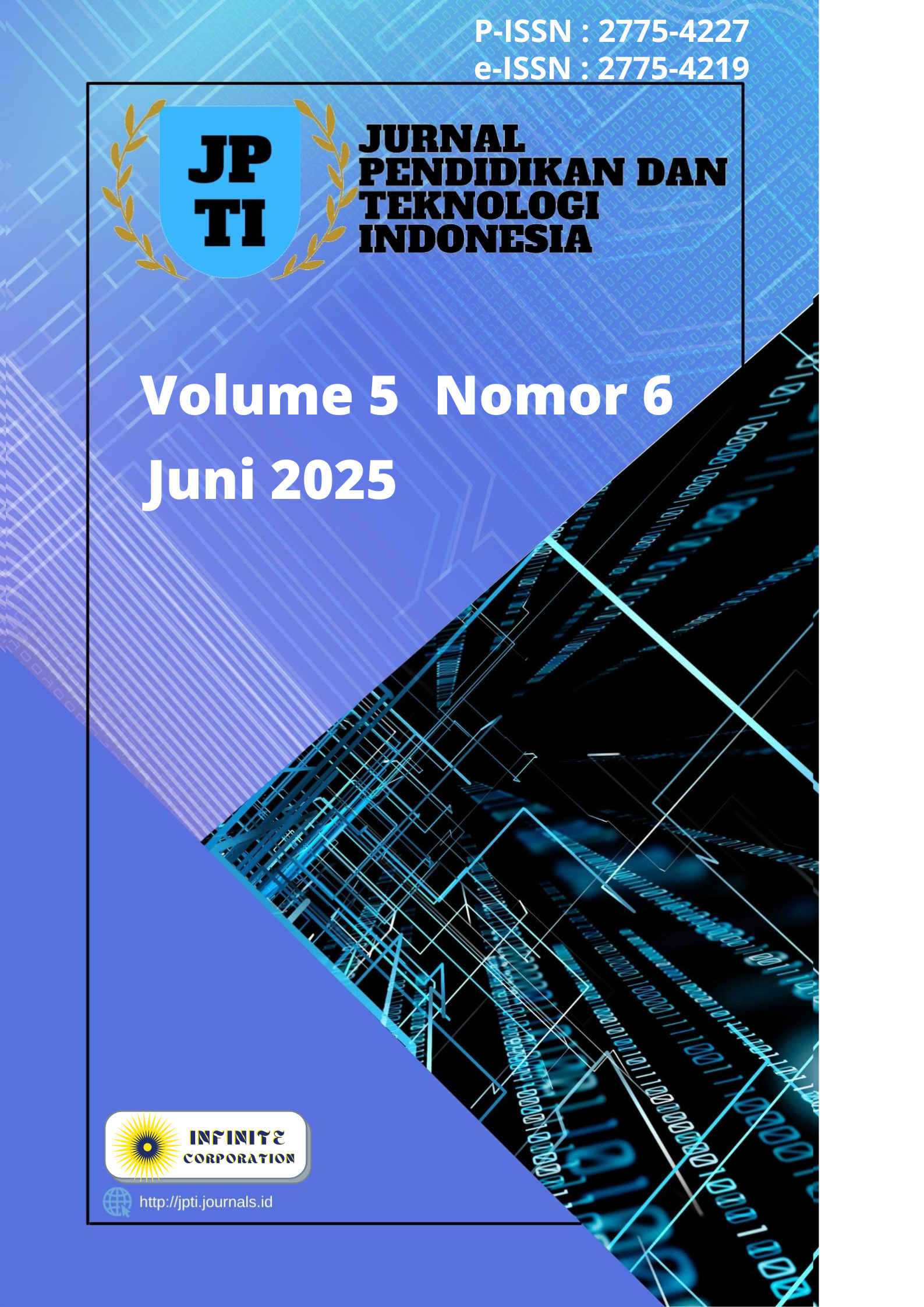Characteristics and Energy Potential of Bio-Briquettes from Cassava Peel, Water Hyacinth, and Sawdust
DOI:
https://doi.org/10.52436/1.jpti.439Keywords:
bio-briquettes, biomass, calorific value, experimentsAbstract
Abstract. Agricultural waste biomass direct burning to generate heat in industrial applications is inefficient. In addition, the difficulty in shipping and storage is due to its large volume and non-uniform shape. One approach to overcome this problem is by compacting the biomass to increase density, improve calorific value, and save a better combustion rate. In this study, the screw extruder machine was designed to compress, heat, and extrude bio-briquettes to form a hollow hexagon cross-section with an inscribed circle diameter of 52mm from biomass waste. The water hyacinth and cassava peel biomass were each dried and chopped into small particles before being mixed with sawdust. Cassava peel flakes also act as a binder in this mixture. We investigated the effect of biomass composition and extruder heating temperature on the calorific heating value and burning rate of bio-briquettes. We complete the experiments at three temperature levels and three levels of biomass composition. The results of the study found that there was no significant effect of the heating temperature factor on the calorific value and the rate of combustion of briquettes. While the composition of biomass impact significantly on the calorific value and burning rate of bio-briquettes. The calorific value reached 19.16 MJ/kg in the 50% sawdust, 30% water hyacinth, and 20% cassava peel bio-briquettes composition with a burning rate of 1.49 g/min. Water hyacinth and cassava peel waste recovery as an energy source not only turns waste into valuable resources but again becomes a solution to the problem of water hyacinth pest invasion and even provides economic and ecological benefits.
Downloads
References
Suryaningsih, S.; Nurhilal, O.; Yuliah, Y.; Salsabila, E. Fabrication and Characterization of Rice Husk Charcoal Bio Briquettes. AIP Conf. Proc. 2018, 1927, doi:10.1063/1.5021237.
Suryaningsih, S.; Nurhilal, O. Sustainable Energy Development of Bio Briquettes Based on Rice Husk Blended Materials: An Alternative Energy Source. J. Phys. Conf. Ser. 2018, 1013, doi:10.1088/1742- 6596/1013/1/012184.
Okudoh, V.; Trois, C.; Workneh, T.; Schmidt, S. The Potential of Cassava Biomass and Applicable Technologies for Sustainable Biogas Production in South Africa: A Review. Renew. Sustain. Energy Rev. 2014, 39, 1035–1052, doi:10.1016/j.rser.2014.07.142.
DINAS KOMUNIKASI DAN INFORMATIKA; PROVINSI JAWA TIMUR Indonesia Negara Penghasil Singkong Terbanyak Keempat Dunia- Dinas Komunikasi Dan Informatika Provinsi Jawa Timur Available online: https://kominfo.jatimprov.go.id/read/umum/indonesia-negara-penghasil-singkong-terbanyak- keempat-dunia (accessed on 23 November 2022).
Tahira, D.; Gareso, P.L.; Suriamiharja, D.A.; Subar, S.; Inzanaa, N.; Palenteka, N. Physical Properties of Briquettes Based on Charcoal from Selected Biomass. Int. Conf. Sustain. Energy Eng. Appl. 2012 2012.
Alamsyah, R.; Siregar, N.C.; Hasanah, F. Torrefaction Study for Energy Upgrading on Indonesian Biomass as Low Emission Solid Fuel. IOP Conf. Ser. Earth Environ. Sci. 2017, 65, doi:10.1088/1755- 1315/65/1/012051.
Olaniyan, A.M.; Olawale, T.T.; Alabi, K.P.; Adeleke, A.E.; Oyeniyi, S.K. Design, Construction and Testing of a Biogas Reactor for Production of Biogas Using Cassava Peel and Cow Dung As Biomass. Arid Zo. J. Eng. Technol. Environ. 2017, 13, 478–488.
Ong, L..; Kurniawan, A.; Lin, C..; Ju, Y..; Ismadji, S. Bio-Oil from Cassava Peel: A Potential Energy Resources. Bioresour. Technol. 2013, 145, 157–161.
Heriyanti, A.P.; Fibriana, F.; Tirtasari, N.L. Bioethanol Production from Cassava-Based Industrial Wastes Using Acid Hydrolysis and Simple Fermentation. J. Phys. Conf. Ser. 2020, 1567, doi:10.1088/1742- 6596/1567/2/022024.
Sukarni, S.; Zakaria, Y.; Sumarli, S.; Wulandari, R.; Ayu Permanasari, A.; Suhermanto, M. Physical and Chemical Properties of Water Hyacinth (Eichhornia Crassipes) as a Sustainable Biofuel Feedstock. IOP Conf. Ser. Mater. Sci. Eng. 2019, 515, doi:10.1088/1757-899X/515/1/012070.
Hudakorn, T.; Sritrakul, N. Biogas and Biomass Pellet Production from Water Hyacinth. Energy Reports 2020, 6, 532–538, doi:10.1016/j.egyr.2019.11.115.
Pin, L.A.; Pennink, B.J.W.; Balsters, H.; Sianipar, C.P.M. Technological Appropriateness of Biomass Production in Rural Settings: Addressing Water Hyacinths (E. Crassipes) Problem in Lake Tondano, Indonesia. Technol. Soc. 2021, 66, 101658, doi:10.1016/j.techsoc.2021.101658.
Bronzato, G.R.F.; Ziegler, S.M.; Silva, R. de C. da; Cesarino, I.; Leão, A.L. Water Hyacinth Second- Generation Ethanol Production: A Mitigation Alternative for an Environmental Problem. J. Nat. Fibers 2019, 16, 1201–1208, doi:10.1080/15440478.2018.1458000.
Rezania, S.; Ponraj, M.; Din, M.F.M.; Songip, A.R.; Sairan, F.M.; Chelliapan, S. The Diverse Applications of Water Hyacinth with Main Focus on Sustainable Energy and Production for New Era: An Overview. Renew. Sustain. Energy Rev. 2015, 41, 943–954, doi:10.1016/j.rser.2014.09.006.
Sierra-Carmona, C.G.; Hernández-Orduña, M.G.; Murrieta-Galindo, R. Alternative Uses of Water Hyacinth (Pontederia Crassipes) from a Sustainable Perspective: A Systematic Literature Review. Sustain. 2022, 14, 1– 14, doi:10.3390/su14073931.
Harun, I.; Pushiri, H.; Amirul-Aiman, A.J.; Zulkeflee, Z. Invasive Water Hyacinth: Ecology, Impacts and Prospects for the Rural Economy. Plants 2021, 10, doi:10.3390/plants10081613.
Prasetyo, S.; Anggoro, S.; Soeprobowati, T.R. Water Hyacinth Eichhornia Crassipes (Mart) Solms Management in Rawapening Lake, Central Java. AACL Bioflux 2022, 15, 532–543.
Maulidyna, A.; Alicia, F.; Agustin, H.N.; Dewi, I.R.; Nurhidayah, I.; Dewangga, A.; Kusumaningrum, L.; Nugroho, G.D.; Jumari, J.; Setyawan, A.D. Review: Economic Impacts of the Invasive Species Water Hyacinth (Eichhornia Crassipes): Case Study of Rawapening Lake, Central Java, Indonesia. Int. J. Bonorowo Wetl. 2021, 11, 18–31, doi:10.13057/bonorowo/w110103.
Oladeji, J.. Theoretical Sspects of Biomass Briquetting : A Review Study. J. Energy Technol. Policy 2015, 5, 72–82.
Bizhanov, A.; Kurunov, I.; Dalmia, Y.; Mishra, B.; Mishra, S. Blast Furnace Operation with 100% Extruded Briquettes Charge. ISIJ Int. 2015, 55, 175–182, doi:10.2355/isijinternational.55.175.























